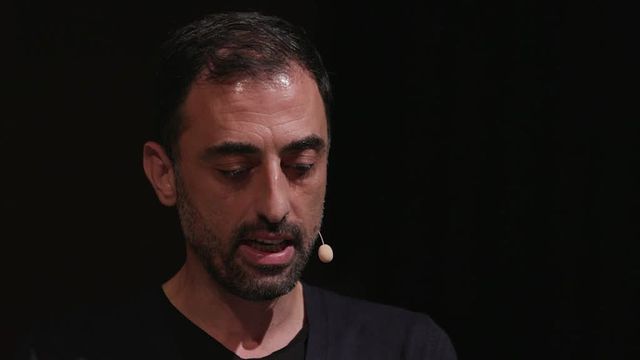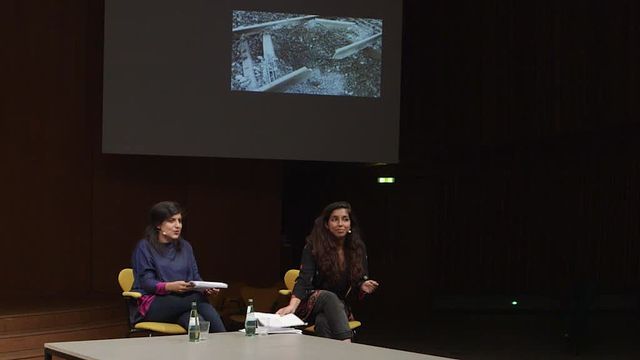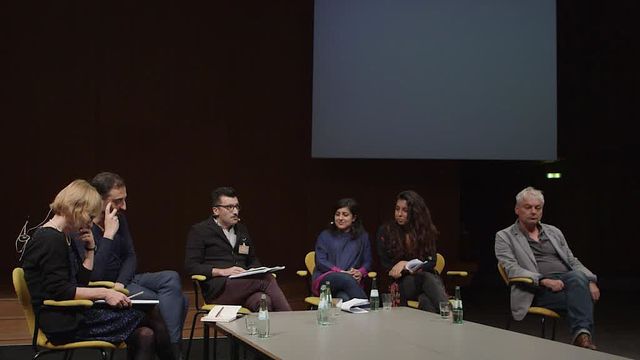Unsmooth, Broken Flow of Travels
With Yazid Anani, Boris Buden, Zeynep Çelik and Shahana Rajani & Zahra Malkani
Many clues are left along the railway tracks: they can be found in Agatha Christie’s Murder on the Orient Express of 1934; Raymond William’s Border Country of 1960; the British miners’ strike of 1926; the German archaeological excavations carried out in the Ottoman Empire; and Chinese investment interests in Pakistan. These clues are crucial for uncovering new details about the accumulation of capital and its intrinsic links to colonialism, nationalism, and global imperialism.
Boris Buden
From Orient to Archaeology: A Railway through Time
Lecture
The life and work of a writer can map a vast territory. Such is the case with Agatha Christie, who made the so-called Orient Express famous. Not only as a fictional crime scene, but also as a metaphor for cultural space, it was the subject of an exhibition and a book titled Agatha Christie und der Orient (1999). The English title, though, reads differently: Agatha Christie and Archeology (2001). This slight shift in meaning has far-reaching consequences. As Johannes Fabian and Edward Said noted, Europe does not like to share time with its “Other.” Travelling to the East meant travelling to the past, fully in accordance with the interests of capitalist exploitation. But what do European travel itineraries and cultural production follow today in the “age of commemoration” when Europe prefers to see itself in the past? Does it mean that contemporary capitalism is closer to the past more than ever before?
Zeynep Çelik
Railways and the Politics of Archaeology
Lecture
Museology and archaeology occupied a privileged place among the wide-ranging Ottoman reforms that took place from the mid-nineteenth century to the First World War, intertwining cultural policies with political, ideological, administrative, economic, and technological initiatives. Within this broad framework, the link between antiquities and railway construction in the Eastern Mediterranean provinces of the empire will be examined from several perspectives, among them legal restrictions, specifications in railway concessions given to foreign companies, growing control over European archaeologists by locals (including construction workers), implications for the transportation of antiquities, and facilitation of travel, hence enhancement of tourism.
Yazid Anani
an imaginary train ride, 1926
Lecture performance
An imaginary train journey on the Hijaz Railway across the landscape of Palestine in 1926: the journey unpacks travel narratives that describe the changing landscape seen through the windows, and presents conversations between several passengers who get on and off the train at different stations. These travel narratives reveal intimate stories of precious objects carried by travelers, transcribing testimonies on the social and political landscape. An imaginary train ride as a way of looking at the future renders an anachronistic trajectory between multiple histories and mythologies against the current confinement of Palestinian geography.
Shahana Rajani & Zahra Malkani
Afterlives of Imperial Formations
Lecture performance
Because of the emerging China–Pakistan Economic Corridor, which is reviving the Karachi railways, Pakistan is witnessing the resurgence of the colonial railway infrastructure in the present time. This presentation offers two forms of engagement with the topic: one is an attempt to read and understand these imperial formations; the other is the resistance and refusal of it. The first is the symbolic attacks on the railway carried out by separatists in Sindh and Balochistan, following a long tradition of nationalist resistance to the colonial infrastructure. The second is the repurposing of the ruins of the railway into public spaces by the communities living around them. The relationship of these will be explored within the context of both a history of colonial-era violence on the railway as well as the contemporary moment of resurgence in the infrastructure—creating a new wave of displacements, occupation, and environmental degradation.
Part of After the Wildly Improbable, curated by Adania Shibli





